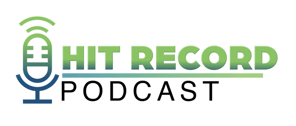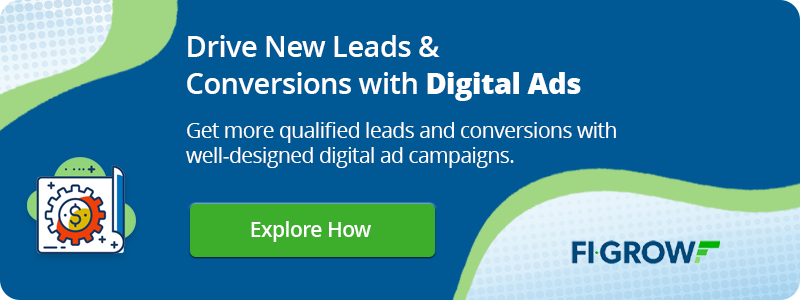Episode 69 - How to Set Digital Ad Budgets for Your Bank or Credit Union


Don't Miss An Episode, Subscribe Now

In this information-packed episode, Meredith Olmstead, CEO of FI GROW Solutions, and Ida Burr, Director of Digital Ads Management, dive into the nuances of budgeting for digital ads in the banking and credit union sectors. They discuss the strategic allocation of funds across various types of digital advertising, including social media, pay-per-click, display, and YouTube pre-roll ads, to optimize both engagement and conversions. Whether you're managing a small budget or scaling up, their expert tips on adjusting spend based on audience size and campaign performance are invaluable for anyone looking to enhance their digital marketing strategy.
Key Takeaways:
1. Strategic Budgeting: Allocate conservative budgets for social media ads aimed at increasing brand awareness, while prioritizing higher budgets for PPC ads that are more likely to drive conversions. Display ads should be used judiciously, with an emphasis on complementing other advertising efforts.
2. Audience-Driven Allocation: Tailor your advertising budgets based on the potential audience size and specific market characteristics. This ensures that financial resources are efficiently used, maximizing impact without unnecessary expenditure.
3. Integrated Advertising Approach: Employ a balanced strategy that integrates various ad types, including PPC, social media, display, and YouTube ads. This integration helps maintain visibility across different platforms and enhances the overall effectiveness of the advertising campaign.
Transcription:
Meredith Olmstead:
Hi there. I'm Meredith Olmstead, CEO, and founder of FI GROW Solutions. I am here with Ida Burr, our director of digital ads management for all of our clients. Say hi, Ida.
Ida Burr:
Hi everyone.
Meredith Olmstead:
And we were just having a talk about budgeting for digital ads mostly because we are putting together a webinar that's going to be a free webinar. We'll probably have it on our website eventually as well. All about all of the tips and tricks for running successful digital ad campaigns. And of course the first thing we started with, and we were putting this together, Ida and I started talking about budgeting. So I thought, "Hey, let's hit record and let's just share how to kind of understand what your budgets should or need to be or the minimums and maximums and those kinds of things around all the different kinds of digital ads that we run and recommend for clients."So Ida, let's talk about the first kind of ads that pretty much everybody's still running, which is social media. So I know that these are, just for the purpose of conversation, these tend to be engagement and a little less on conversions. So that's kind of like a rule of thumb around social media ads. But we really run social media ads in the Facebook and Instagram space and also in LinkedIn. And we are also starting to dabble in TikTok. But generally, Ida, what do you tell people when it comes to deciding budgets around social media?
Ida Burr:
With social media, like you said, it is really more of kind of an awareness type ad. So we are driving traffic to your website, but these ads aren't where we see a ton of conversion. We really try to focus most of the budget where we're going to get conversion. So with social, we're more conservative. It really depends on the size of the audience, what field of membership you have. So I plug all the available counties or however you may have your membership eligibility laid out. I'll plug that into Facebook and find out the size of that audience. So most of our clients, that usually comes out to around a million people, sometimes a little more, sometimes a little less. And with that size audience, we would suggest between 1,000 to 1,500 tops for social media ads.
Meredith Olmstead:
And it's funny because we work with institutions that are, some have really big and spend a lot more money than that on digital ads a month. So if a institution had big budgets, would you recommend that they double that or triple it?
Ida Burr:
Yeah, it really depends on the pay per click presence you have. So I would suggest putting most of your extra budget into the pay per click space. But with Facebook, especially if you have new areas you're trying to move into or you're just expanding your current membership area, like adding extra budget to social does make sense there.
Meredith Olmstead:
And it's not just credit unions, obviously banks, so members, customers, potential new customers, it's really driven on potential audience size. So if you are in a huge metropolitan area and you do the searches on the keyword searches in that area for financial products and services because kind of how you determine those audience sizes, people who are out there taking a look and searching in those areas, you're going to want to make sure that the size of the audience drives your budget, not just how much money you have to spend basically. So you don't want to just dump budget in social media unnecessarily. You want to make sure that you're strategically placing budget where it's going to be most effective. So let's jump into pay per click, that's PPC, Google search ads. These are really kind of the gold standard that we recommend that if you have to pick one kind of digital ad over all else, these would be the ones that we would recommend. But we do often run multiple kinds of digital ads, but this is really kind of the number one that we start with.
Ida, how do you budget around pay per click ads?

Ida Burr:
Very similarly. I'll go in, I do a little bit of research. I plug in the areas, I get some search volume forecast so we can see how many monthly searches are revolved around some of the major keywords. And from there, usually I recommend we start with a minimum of a $1,000 per campaign. So this would be per product ad. So we would have one campaign that is strictly focused on auto loans or one campaign that is strictly focused on checking accounts. So each campaign, I would start at a minimum of $1,000 and there would likely be room to grow there as well. Once you start getting some results and seeing the search volume you're getting.
Meredith Olmstead:
Gotcha. So you could run, say if you're a mid-sized institution in a medium-sized metropolitan area, it wouldn't be uncommon for an institution to run two or three different campaigns. Maybe a deposit product, maybe a loan product, maybe checking account, maybe banks or credit unions near me, just like an awareness pay per click that also would probably go to a deposit product running three of those different campaigns at the same time, spending say $1,500 per campaign. That would definitely be within the realm of possibility. And that was cool. One of the things that you did mention that we definitely are going to be talking about more in our webinar is using that impression is lost because of budget metric, which was really neat. It doesn't even come in a lot of the reporting out of the box on Google Ads, you have to add it. But that's basically tells you what percentage of searches you didn't win because you weren't quite spending enough. And it can be anywhere from 2%, 5%, 25%, 80%, and that can tell you after a few weeks where you might want to adjust your budgets up or down.
All right, so I don't want to run out of time. So we also, in the Google space, we run a couple of other kinds of ads. The second one that you probably say is the least important is display, but we do run those for some of our clients. What are the budgets that you recommend people consider for display and the purpose behind spending it?
Ida Burr:
I look at display similarly to how we, I look at social. So it's more of an awareness type ad. You're going to get a ton of impressions and a ton of clicks and you're not really going to see that much conversion. So again, depending on the audience size, I would say anywhere from $300 to $500 start in that realm and just see what kind of results you're getting. Of course the impressions will be there and the clicks will be there, but is it worth it to spend any more than that just for impressions and clicks?
Meredith Olmstead:
Gotcha. Gotcha. We stay away from vanity metrics and we consider sometimes clicks and impressions vanity metrics. Yeah, they look great on paper, but they don't really achieve bottom line results. You have to figure out where you're going from those actions. The one thing you did also mention to me is you tell clients you should never run just display. So if you're short on budget, cut display. But if you're going to run display, you should always be running display ads alongside search ads because you want to be showing people what they're searching for if they're in the market for financial products and services first. And then if you're still just building some brand awareness alongside that, that's okay too. So last thing you do for clients in the Google ad space, but it's a totally different kind of ad is we've been digging into for the last two years, YouTube pre-roll ads for clients. So talk to me about the benefits of those and where the budgets kind of land on those for clients.
Ida Burr:
The budget for the YouTube campaigns, we've been hovering around a similar budget that we use for pay per click, because again, we're getting a ton of impressions and clicks with a small budget. But the thing with the YouTube ads is we're seeing actual finished applications from these ads. So we have conversion tracking that can not only tell us this person clicked to start the application, but they followed through the entire application and finished it.
Meredith Olmstead:
Nice.
Ida Burr:
So these, they kind of perform like display ads, but then we're getting search campaign results from them.
Meredith Olmstead:
Nice.

Ida Burr:
So we're getting the best of both worlds with the YouTube placements.
Meredith Olmstead:
Nice. Okay, cool. So you could start small, maybe $300 or $500, throw your ad up 15 or 20 second, 30 second ad at the most, clear calls to action. They don't even need to be around a product or service really because they get shown to anybody basically. And Google learns over time who's more apt to click on your ad and then they become smarter and smarter. But you're saying that even if you start small, like $300 or $500 a month, a lot of times people are going to increase that budget because you're getting such good results. Cool. All right, awesome.
Ida Burr:
Exactly.
Meredith Olmstead:
Well thanks, Ida. I think this is was a super concise summary of how to set some budgets and priorities around digital ads, at least these four different kinds of digital ads that we find great value in. So I appreciate your time. If you all are interested in learning more about digital ads or inbound marketing, content marketing for your bank or credit union, please visit us at Figrow.com. We have lots of other podcasts, blogs, case studies, so lots of great resources there and otherwise let's just get out there and make it happen.








Blog comments